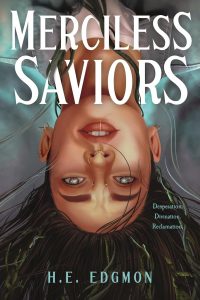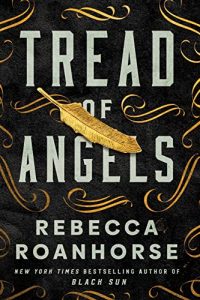Stefan Dziemianowicz reviews Karl Edward Wagner
Karl Edward Wagner was among the most talented writers of the generation that helped to put horror on the popular fiction map in the 1970s and ’80s. For this comprehensive two-volume retrospective of his short horror fiction, editor Stephen Jones gathers the full contents of Wagner’s collections In a Lonely Place (1983) and Why Not You and I? (1987), plus most of the contents of Exorcisms and Ecstasies, a compilation of Wagner’s previously uncollected short fiction that Jones assembled in 1995. The books also include several colleague tributes to Wagner, who died in 1994 at the age of 49, among them ‘‘The Truth Insofar as I Know It’’, David Drake’s illuminating and very sad eulogy to his friend and business partner.
The contents of the two volumes – 35 stories – span 20 years and are arranged largely in chronological order of their publication. Where the Summer Ends collects nine long stories, most of which not only represent Wagner’s best work but also some of the most distinguished horror fiction written in the last quarter of the twentieth century. Wagner was already recognized as a sword-and-sorcery wunderkind for his Howardesque tales of the warrior Kane when he published the book’s lead-off story, ‘‘In the Pines’’, in a 1973 issue of The Magazine of Fantasy and Science Fiction. The tale is a retelling of sorts of Oliver Onions’ classic ghost story ‘‘The Beckoning Fair One’’ (which Wagner references in his story) and it shows how well Wagner understood the mechanics of the horror tale. Onions’ story tells of an author who rents a house and who crumbles psychologically under the influence of a former female tenant whose ghostly presence has imbued the place. In Wagner’s story, a husband who moves temporarily with his wife to a remote cabin in Tennessee to recuperate emotionally following the death of their young child falls under the spell of a ghostly woman who disappeared from the premises half a century before. Atmospheric and laden with portents and foreshadowings, the story builds to a powerful climax in the final paragraphs. It’s the first of several of Wagner’s tales to feature a femme fatale as an embodiment of supernatural horror.
‘‘In the Pines’’ is a good example of how Wagner could take themes from classic horror fiction and refurbish them effectively in stories that spoke to the fears and concerns of modern readers. He was remarkably well read in the horror genre, and his fiction is rich with references and homages to his predecessors and their work. ‘‘Sticks’’ is a tribute to the artist Lee Brown Coye, and by extension the fiction of H.P. Lovecraft, whose Arkham House collections Coye designed dustjackets for. About the time that he wrote the story, Wagner had commissioned Coye to create the artwork for Worse Things Waiting, a collection of Manly Wade Wellman’s fiction that came out under the short-lived Carcosa specialty press imprint that Wagner had started up with David Drake and James Gray Groce. In Coye’s eerie primitive stick and twig designs, Wagner found the perfect inspiration for a story that nodded to the Cthulhu Mythos without overtly evoking it. Another writer whose work Wagner admired is Robert W. Chambers, author of the landmark weird fiction collection The King in Yellow (1895). The influence of that book and its surreal, nightmare-ridden approach to horror is evident in ‘‘The River of Night’s Dreaming’’, Wagner’s unsettling blend of supernatural and psychological horror.
The variety of Wagner’s early fiction is impressive. ‘‘The Fourth Seal’’, a wonderfully paranoid speculation about what the medical profession is really trying to achieve through disease management, doubtless grew out of Wagner’s training as a psychiatrist (he practiced very briefly). ‘‘Where the Summer Ends’’, written for Kirby McCauley’s (then) state-of-the art horror anthology Dark Forces (1980), is a great monster story in which the monsters are never seen, but very effectively suggested. ‘‘.220 Swift’’ is a modern version of the Greek myth of Persephone, laced with elements from the work of Arthur Machen and Robert E. Howard.
‘‘Neither Brute Nor Human’’, the next-to-last story in the first volume, marks a turning point in Wagner’s fiction. A mildly cranky jab at the genrification of the horror market, about two writers who discover they are being vampirized – literally, as well as creatively – by fans, it introduces a theme that recurs in a number of stories from the next ten years of Wagner’s output: the artist undone by forces hostile to his creativity – very often his own personal demons. This is the subject of ‘‘The Last Wolf’’, ‘‘Silted In’’, ‘‘Lost Exits’’, ‘‘The Slug’’, and several other stories found in Walk on the Wild Side, which collects mostly the shorter works Wagner produced in his last decade. The impact of these stories is notably less than those in the first volume, in part because their shorter length makes them more dependent on twist endings and narrative gimmicks to achieve the horrors that Wagner was able to evoke through the mood-building and careful orchestration of creepy events in his longer work. To be sure, there are some very good stories in volume two – among them ‘‘Into Whose Hands’’, which ingeniously turns on its head the notion of the physician who would play God, and ‘‘More Sinned Against’’, a black magic revenge tale with a nasty surprise worthy of a Robert Bloch story – but many of these tales, however competently told, read as though they could have been written by any number of writers other than Wagner. The eroticism Wagner deployed to great effect in ‘‘The River of Night’s Dreaming’’ curdles into crude exhibitionism in ‘‘The Kind Men Like’’ and ‘‘A Walk on the Wild Side’’. And the exuberance of storytelling for storytelling’s sake that buoys up Wagner’s earlier work is replaced by a bitterness that makes several of the stories seem spiteful.
It’s not fair to psychoanalyze any author’s writing as cryptobiograpy, but it’s almost impossible not to do this after reading Drake’s concluding ‘‘The Truth Insofar As I Know It’’, which poignantly details Wagner’s heady days as a writer full of youthful promise and his abrupt slide into the alcoholism that ultimately killed him. The evidence is easily found in his stories, and it virtually screams out at the reader in this passage from ‘‘Did They Get You to Trade’’, Wagner’s self-conscious portrait of a gracelessly aging punk rocker who knows that he’s outlived his time: ‘‘Each one of us has only so much – so much of his best – that he can give. You’re like a punch-drunk boxer hoping for the bell before you land hard on your arse. It’s over for you. No matter how much you want it. No matter how much you try.’’ That’s not a particularly horrific piece of writing, as the best tales in these volumes demonstrate, but it’s an insight into how some of the worst horrors they conjure may have been inspired by the tragic turn of their author’s life.










Which of the two books contain “most of the contents of Exorcisms and Ecstasies”?
Pingback:May 20th Horror Quick Hits :: Hellnotes
Pingback:Locus Online Monitor » Classic Reprints, May